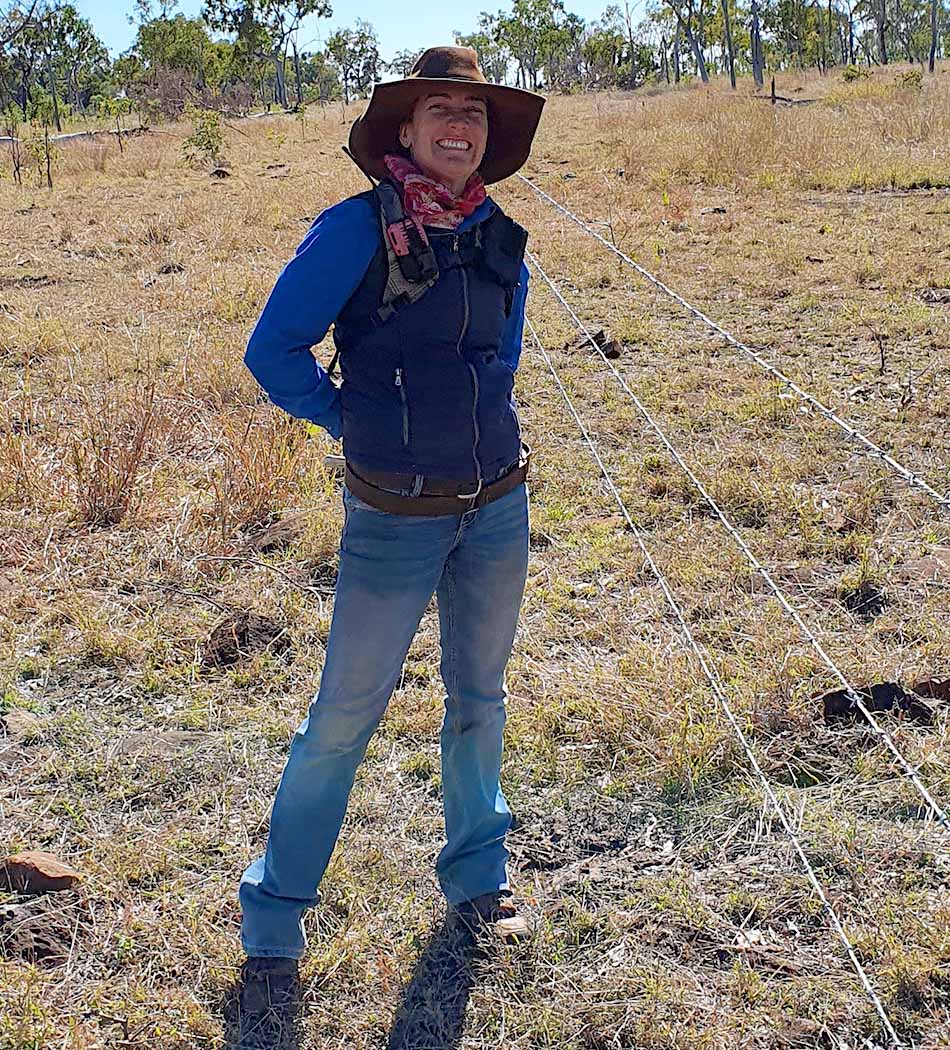The scalded area at the head of a gully system now isolated by fencing on either side of the river.
Getting help to restore degraded land
AN NQ Dry Tropics project is helping Amelia Downs grazier Jane Weir to restore degraded land along a river front on her 20,000ha property.
The Linking Landholders to Frontage Country project, funded by the Queensland Government’s Natural Resources Investment Program — will help her to remedy a large and long-standing erosion problem in the Bottom River paddock, one of 32 paddocks on the property.
The 1250ha paddock included about 10km of the Basalt River.
There is some damage to the banks of the watercourse, but the main concern is an area that has been preferentially grazed, leaving a scalded area at the head of a gully system on the northern side of the river.
Ms Weir believes a different soil type produces sweeter pasture which is always first to be grazed by cattle and their preference for that stretch of ground has destroyed it.
Since she took over management of the property from parents John and Prue in 2014, Ms Weir has focused on continuing to improve the property’s cattle business… and what she calls, its land business.
To that end, she has tried to keep improving her own knowledge as well as constantly looking for the best tools available to help realise her goals.
Getting involved in the Linking Landholders to Frontage Country project was an obvious step for Ms Weir and, with NQ Dry Tropics Senior Project Officer Jaymie Rains, they devised a plan to address the problem in the Bottom River paddock.
The solution is three-fold: fencing, a watering point and grazing management.
After fencing along both sides of the river (about 20kms of three-strand fence), the Bottom River paddock is now three paddocks (enclosing 250ha, 700ha and 300ha), with the river and the problem area in the large centre paddock.
Specifically, Ms Weir plans to use a mob of cattle, confined by temporary fencing, in that paddock for a short, high-density graze to knock down the gully walls with hoof impact and to provide a biological start for regeneration in the area.
Other than that, the paddock will be rested and only lightly grazed to manage what pasture there is and to reduce any fire risk.
Installing a watering point in the 300ha paddock will allow her to implement a grazing regime to better manage pasture and reduce pressure on the problem areas across all three paddocks, while at the same time giving her the tools to be able to regenerate the degraded land.
The watering point is the next step of the project and analysing results from soil analysis in the paddock containing the scalded area.
“It will be interesting to see if there is a special or particular mineral in the soil that the cattle are craving and whether a management change can provide that elsewhere to protect the scalded ground,” Ms Weir said.
The project includes a monitoring component to measure the impact of the groundwork and practice change on the condition and extent of groundcover and on the soil.
Amelia Downs grazier Jane Weir.
Innovation is the name of the game and Ms Weir has made best use of readily available materials to construct unusual strainer posts. Rather than welding and grinding in the paddock causing a fire risk, gabions are pre-constructed, anchored with a couple of star pickets and filled with rock gathered in-situ.



